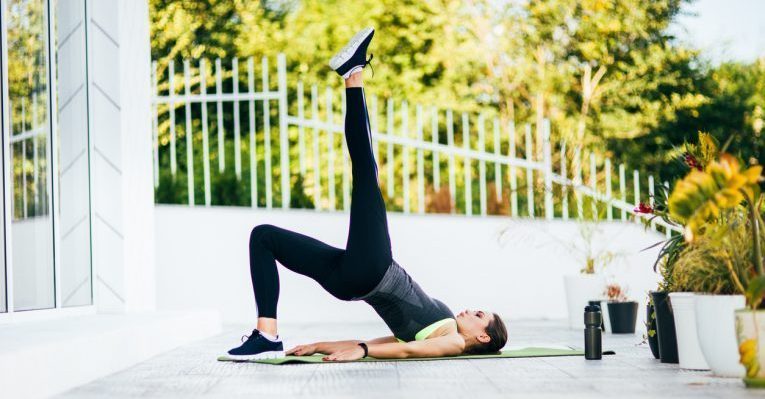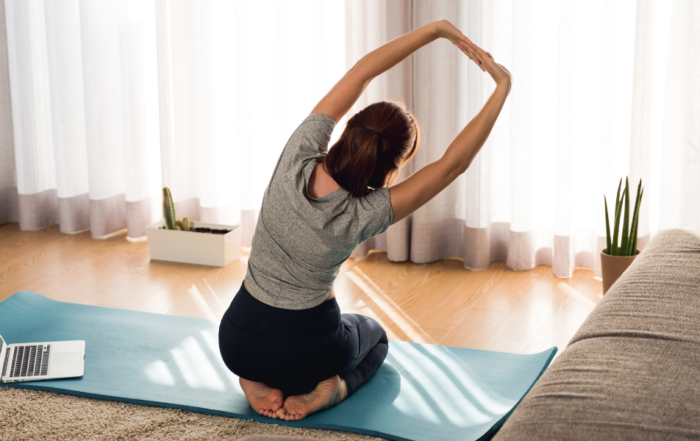 [sibwp_form id=3]
[sibwp_form id=3]
The buttocks are among the anatomical areas where fat is stored, just like the abdomen (stomach), thighs, chest, etc. Depending on the morphotype, each individual will store his lipid reserves in different places (the genetic factor seems to be a major factor). Some people have a flat stomach but bigger buttocks. So how do you get rid of that excess fat?
Understanding where buttock fat comes from
The volume of the buttocks depends both on the development of the buttock muscles and on the amount of fat stored locally. The distribution of these two elements changes their external appearance. This is what makes the difference between a « toned » or « soft » buttock.
What muscles are we talking about?

The vast majority of the gluteal volume is occupied by the « Great gluteal » and « Middle gluteal » muscles, which cover other deeper muscles: the pelvis-trochanterians. These muscles are naturally more developed in some people.
Where is the fat stored?
Everywhere! We build up fat reserves under the skin (subcutaneous adipose tissue), but also between and within the muscles.

These fat cells (adipocytes) contain triglycerides. They are important energy reserves for our body. In order to reduce this fat mass, the balance of energy expenditure must be reversed. Ask your body to store less, but more importantly ask it to spend more!
Eliminate fat from the buttocks and replace it with muscle
In order to lose buttocks, the number of fat cells present locally must be reduced.
How do you do it?
The physical activities that generate the most energy expenditure are HIIT (High Intensity Interval Training) type activities and pure endurance efforts. The HIIT corresponds to an intensive training of limited duration (15-20min) that can be repeated over several cycles. Pure endurance efforts are efforts such as running, cycling, elliptical, swimming etc. Your heart rate should be above 70-80% of your maximum heart rate for efforts longer than 40 minutes.
At the same time, practice various muscle strengthening exercises (static contraction, plyometrics…) specifically targeting the gluteal muscles.
What exercises to make the buttocks firmer?
Simple squats are very effective in strengthening the gluteal muscles. Make sure you get down low and keep your back straight when performing your squats.

3 sets of 30 squats
3 times a week
Buttock bridge: lie on your back, fold your legs and keep your feet slightly apart. Lift the pelvis so that the back-pelvis-thighs alignment is maintained. Hold this position for 30 seconds.

3 times 30 sec. hold
3 times a week
In the same starting position (gluteal bridge), extend one leg and bring the foot as high as possible. Then, let the pelvis descend slowly without touching the ground and then go back up until you find the back-pelvis-thigh alignment. Continue like this 10 times in a row.

3 sets of 10 reps on each leg
3 times a week
 [sibwp_form id=3]
[sibwp_form id=3]
Articles liés
The buttocks are among the anatomical areas where fat is stored, just like the abdomen (stomach), thighs, chest, etc. Depending on the morphotype, each individual will store his lipid reserves in different places (the genetic factor seems to be a major factor). Some people have a flat stomach but bigger buttocks. So how do you get rid of that excess fat?
Understanding where buttock fat comes from
The volume of the buttocks depends both on the development of the buttock muscles and on the amount of fat stored locally. The distribution of these two elements changes their external appearance. This is what makes the difference between a « toned » or « soft » buttock.
What muscles are we talking about?

The vast majority of the gluteal volume is occupied by the « Great gluteal » and « Middle gluteal » muscles, which cover other deeper muscles: the pelvis-trochanterians. These muscles are naturally more developed in some people.
Where is the fat stored?
Everywhere! We build up fat reserves under the skin (subcutaneous adipose tissue), but also between and within the muscles.

These fat cells (adipocytes) contain triglycerides. They are important energy reserves for our body. In order to reduce this fat mass, the balance of energy expenditure must be reversed. Ask your body to store less, but more importantly ask it to spend more!
Eliminate fat from the buttocks and replace it with muscle
In order to lose buttocks, the number of fat cells present locally must be reduced.
How do you do it?
The physical activities that generate the most energy expenditure are HIIT (High Intensity Interval Training) type activities and pure endurance efforts. The HIIT corresponds to an intensive training of limited duration (15-20min) that can be repeated over several cycles. Pure endurance efforts are efforts such as running, cycling, elliptical, swimming etc. Your heart rate should be above 70-80% of your maximum heart rate for efforts longer than 40 minutes.
At the same time, practice various muscle strengthening exercises (static contraction, plyometrics…) specifically targeting the gluteal muscles.
What exercises to make the buttocks firmer?
Simple squats are very effective in strengthening the gluteal muscles. Make sure you get down low and keep your back straight when performing your squats.

3 sets of 30 squats
3 times a week
Buttock bridge: lie on your back, fold your legs and keep your feet slightly apart. Lift the pelvis so that the back-pelvis-thighs alignment is maintained. Hold this position for 30 seconds.

3 times 30 sec. hold
3 times a week
In the same starting position (gluteal bridge), extend one leg and bring the foot as high as possible. Then, let the pelvis descend slowly without touching the ground and then go back up until you find the back-pelvis-thigh alignment. Continue like this 10 times in a row.

3 sets of 10 reps on each leg
3 times a week



